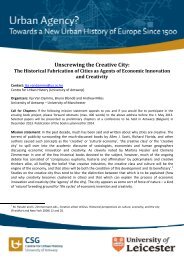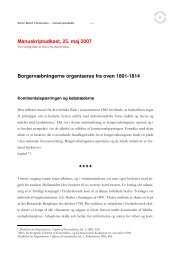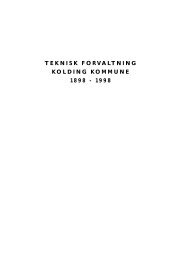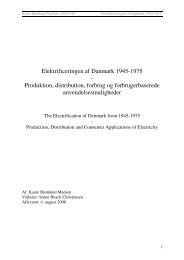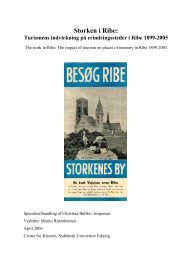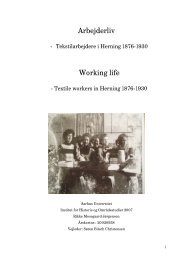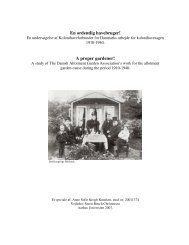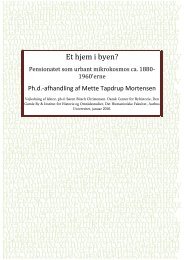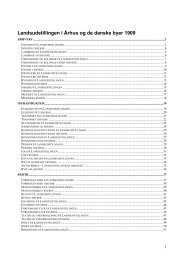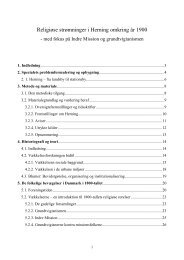Kongernes købstadsbesøg - Dansk Center for Byhistorie
Kongernes købstadsbesøg - Dansk Center for Byhistorie
Kongernes købstadsbesøg - Dansk Center for Byhistorie
Create successful ePaper yourself
Turn your PDF publications into a flip-book with our unique Google optimized e-Paper software.
Summary in English<br />
This thesis examines the relation between the Danish population and the Danish monarchy,<br />
with emphasis on the concordance between the royal self-perception and the people’s<br />
expectations to the king. It is hypothesized that the endurance of the Danish monarchy, at<br />
least in part, can be attributed to a prevailing agreement between royal self-perception and<br />
public expectations. The congruity is examined through a comparative analysis of royal<br />
visits to market towns in Jutland and Schleswig-Holstein during the reigns of three kings:<br />
Frederik 5 th (1746-1766), Christian 8 th (1840-1848) and Christian 10 th (1912-1947). All<br />
three kings have been selected because of the transitional character of their reigns. Frederik<br />
5 th reigned when the theocratic legitimisation was slowly replaced by opinion oriented<br />
absolutism, Christian 8 th was caught between absolutism and the middle class’ demands <strong>for</strong><br />
a free constitution, and Christian 10 th ruled while the monarchy was trans<strong>for</strong>med from<br />
having limited political power to being solely ceremonial.<br />
The study investigates both the power display of the monarch as well as the<br />
homage of the inhabitants of the market towns. The analysis of royal power displays is<br />
per<strong>for</strong>med by applying the power concepts of Max Weber: Macht and Herrschaft. Macht is<br />
defined as the means to <strong>for</strong>ce one’s will upon others. This can be achieved through fear of<br />
physical or economical reprisals - in reality relating to the absolute king’s control of the<br />
military, legislative power and the right to appoint at all levels of the administration,<br />
church and military. Herrschaft is a <strong>for</strong>m of power, where the populace is encouraged to<br />
willingly to accept the monarch’s power. This is accomplished mainly through rituals, but<br />
also by the king demonstrating paternalistic features such as interest in the everyday life of<br />
the common people. The four main responsibilities of the absolute monarch have been<br />
studied, corresponding to the king as leader of the administration, church and military.<br />
Finally, also the king’s paternalism has been examined. The first three activities mainly<br />
relates to Macht while the latter corresponds to Herrschaft. Furthermore, the population’s<br />
view upon the king has been subjected to analysis, mainly through examination of physical<br />
<strong>for</strong>ms of homage such as triumphal arches, songs, and other types of celebrations.<br />
Frederik 5 th predominantly demonstrated Macht in his visits to market towns. He<br />
prioritized inspections of the military, but, interestingly, during these inspections he<br />
managed to convey paternalism as the population saw him taking an interest in defending<br />
the kingdom in a war torn Europe. This emphasis on the military was reflected in the<br />
97



